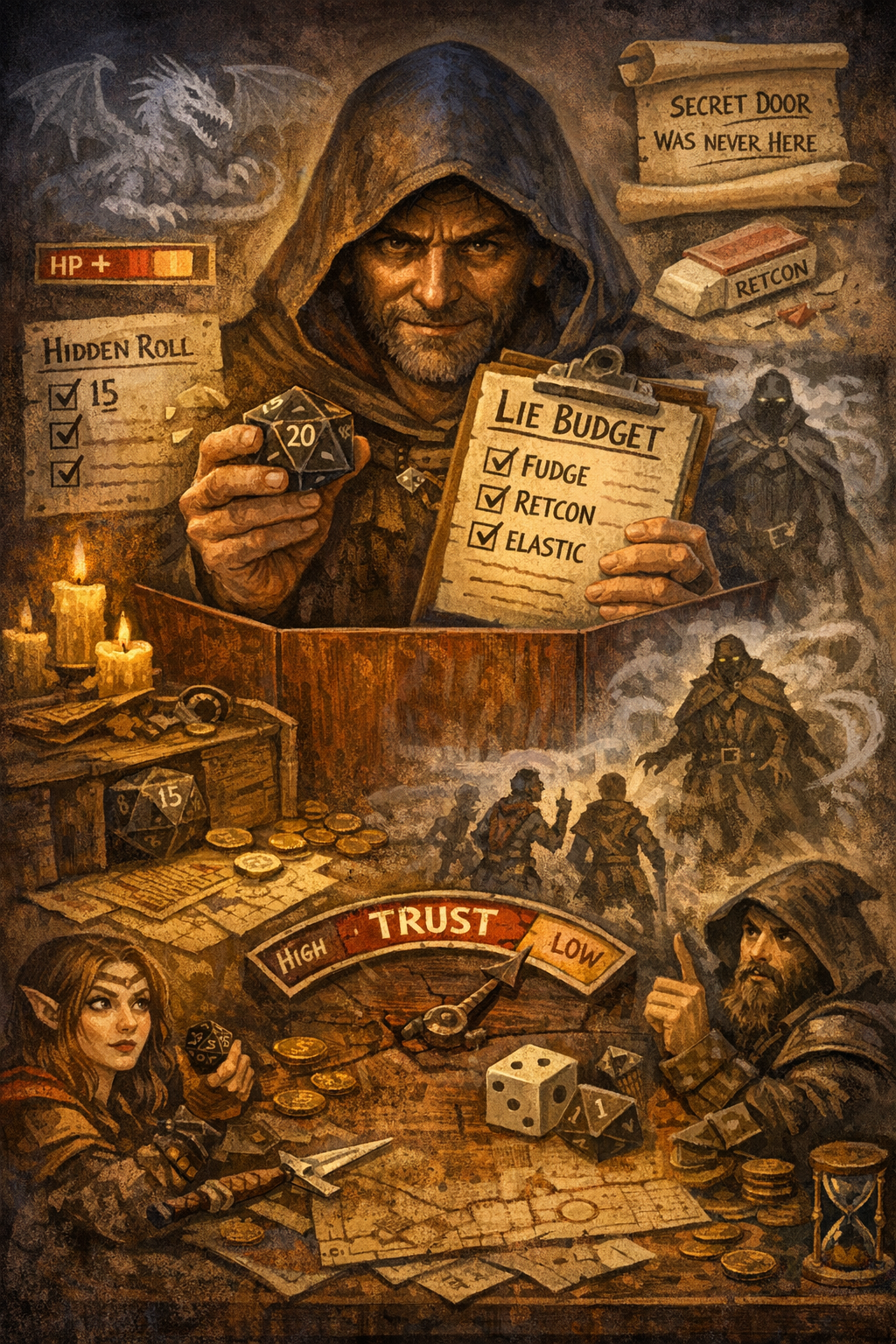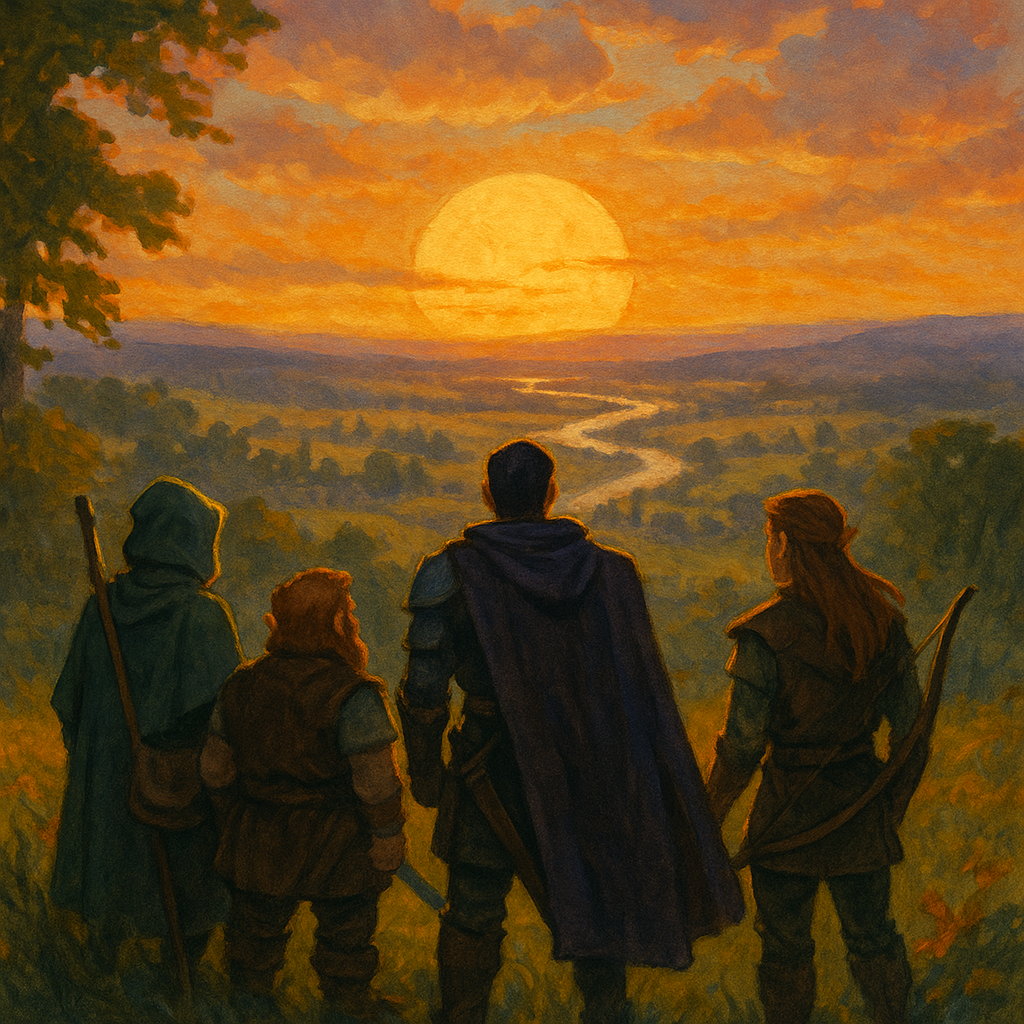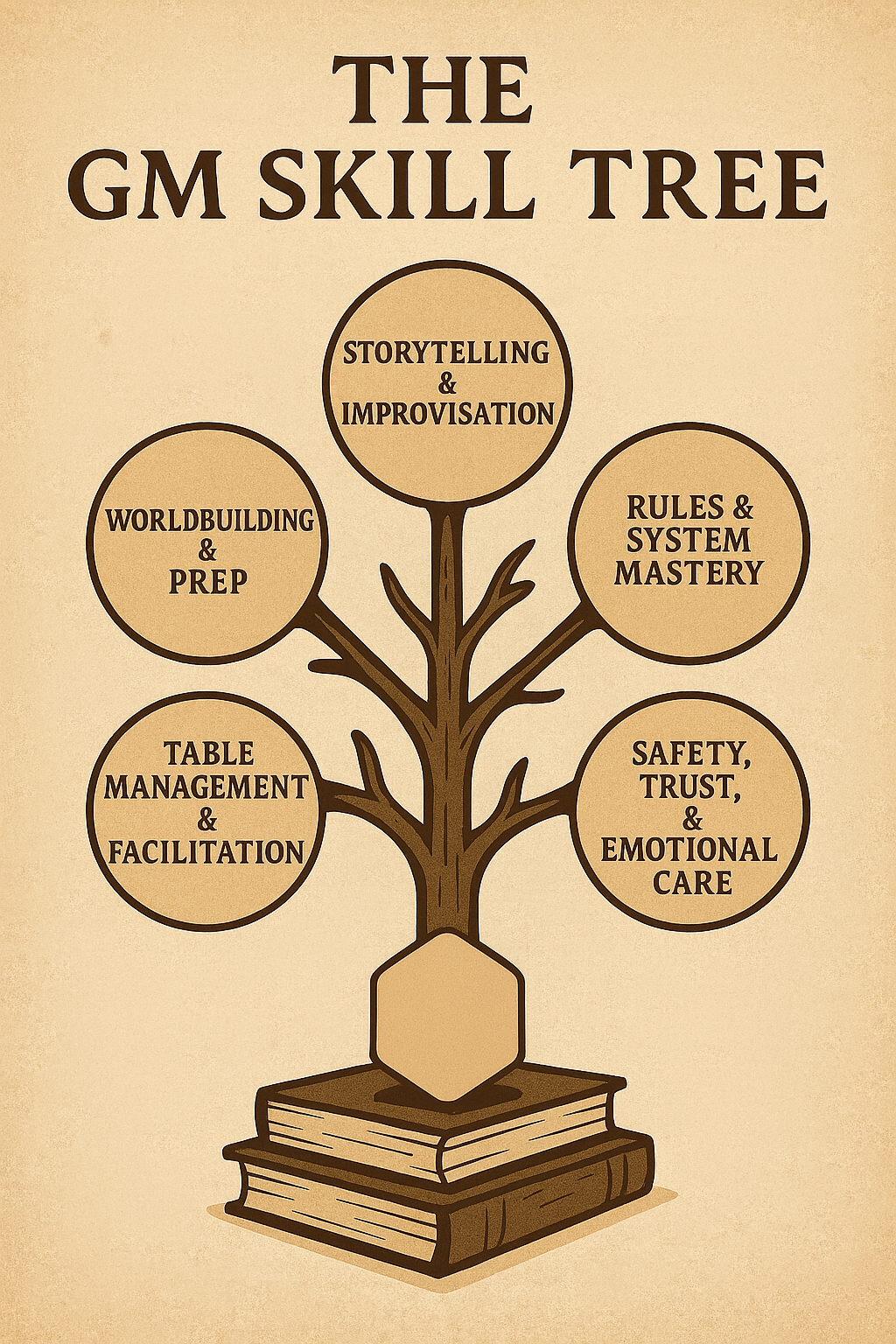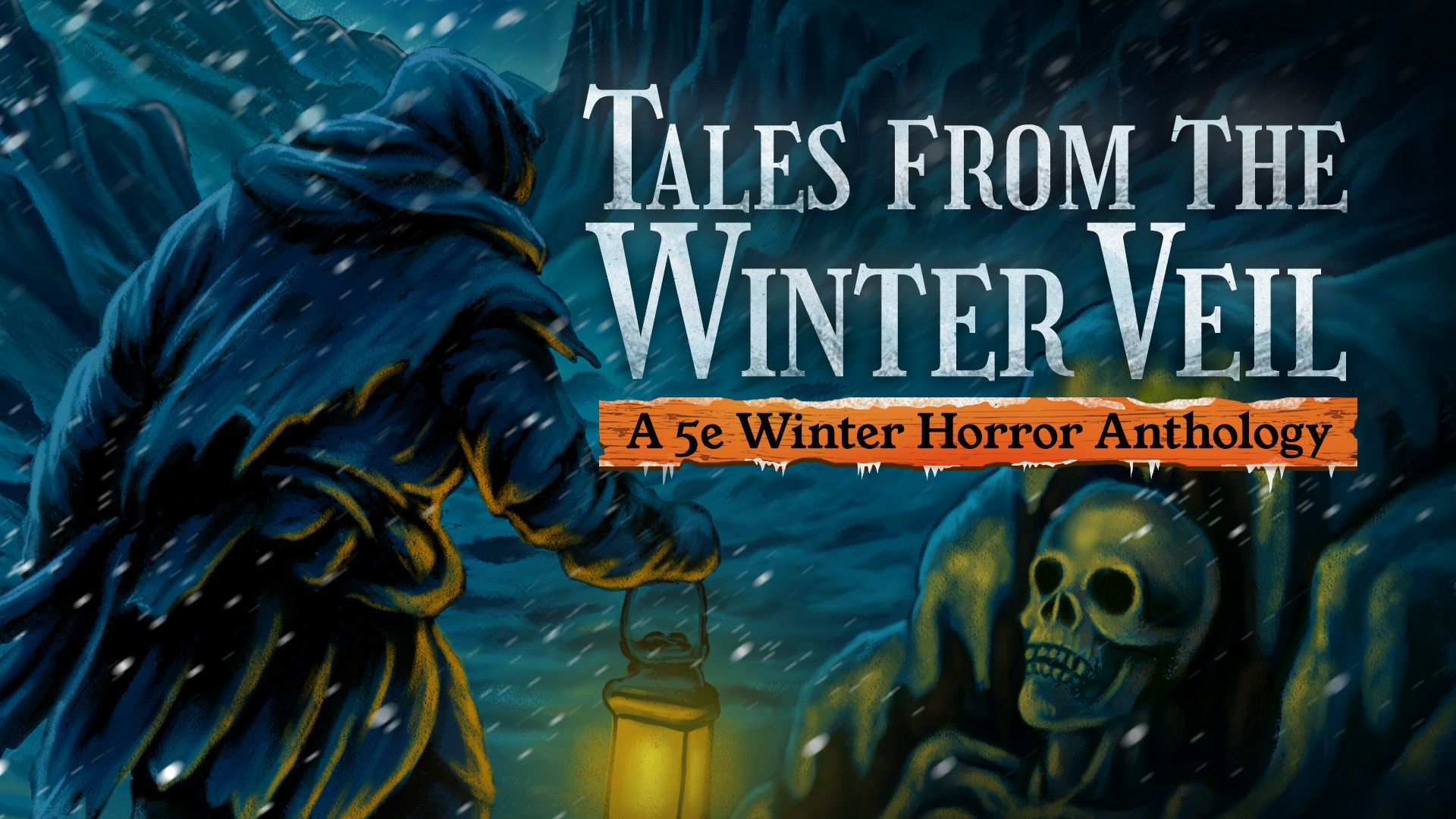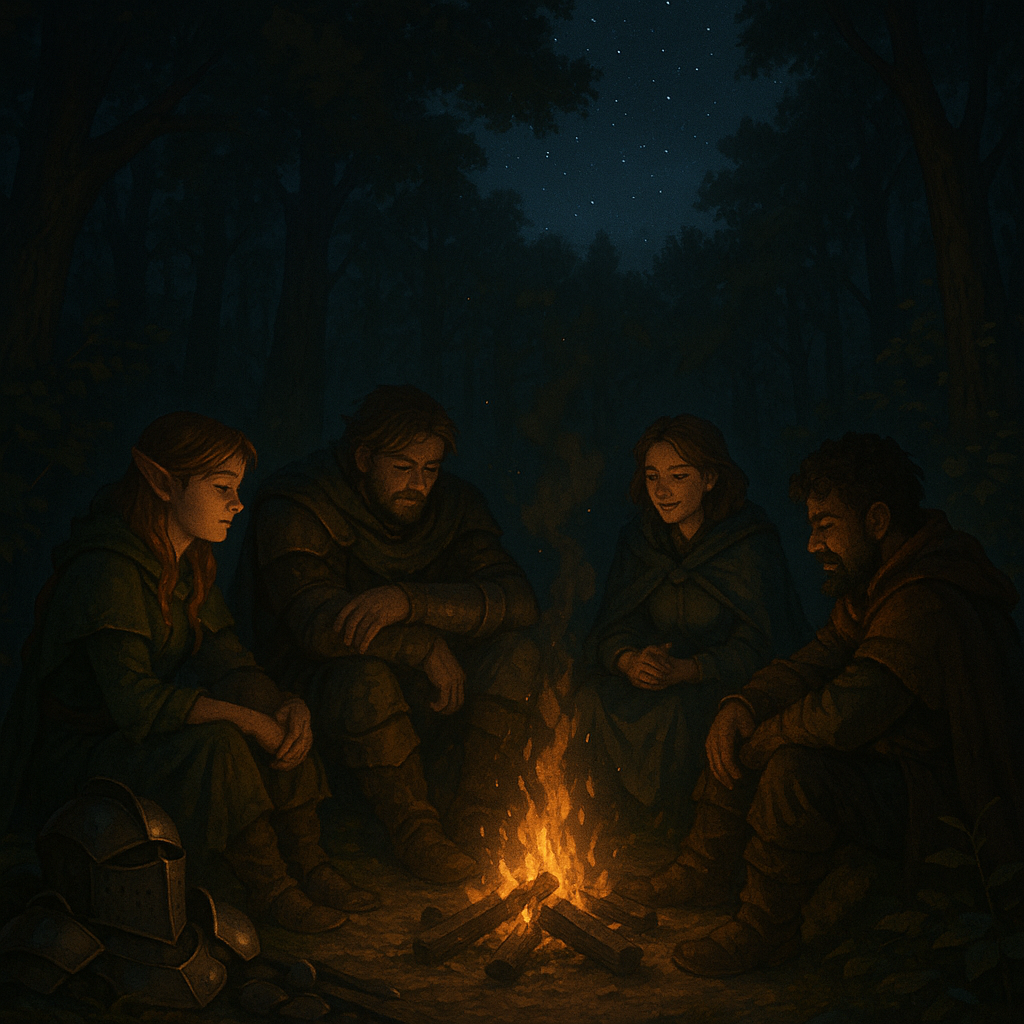The Dungeon as a Character: How to Breathe Life Into an Adventure Site
How to Bring Your Dungeon Alive
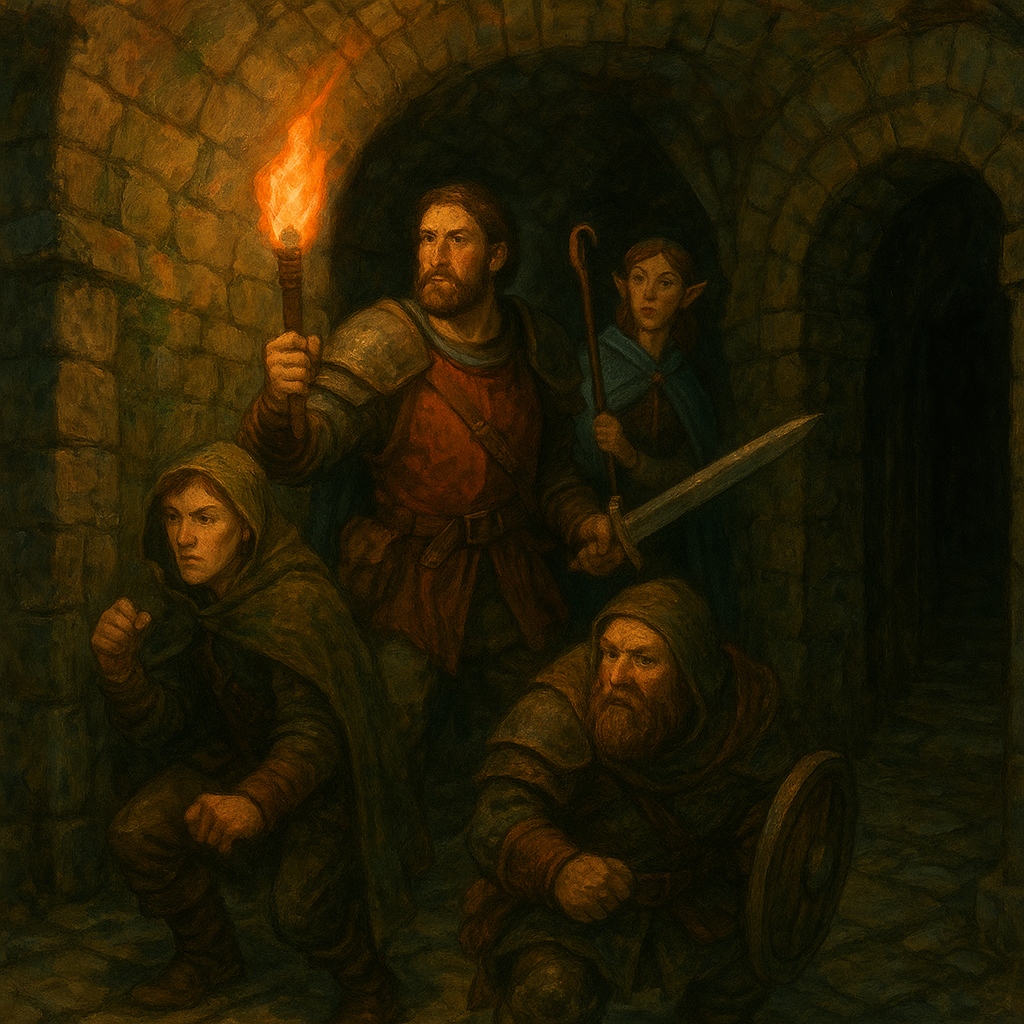
Dear Readers,
There’s a moment every Dungeon Master knows: the torches gutter, the air turns thick, and the players lean in. They’ve crossed the threshold into the dungeon—not a place, but a presence. The walls seem to listen. The air feels intentional. That’s when the dungeon stops being a map and becomes something far greater: a character.
We talk about dungeons as settings, as puzzles, as tactical playgrounds. But what if we treated them as living beings—creatures with moods, motives, and voices? When you do that, the world breathes. The players stop thinking of “room 3B” and start wondering what it wants from them.
Let’s dig deep into the idea of the dungeon as a character—how to give it personality, agency, and story weight. Because once you do, your adventures stop being places to conquer and start being relationships to navigate.
The Dungeon Is Watching
Imagine your dungeon not as a static grid of rooms, but as an entity that observes. Every creak of stone or drip of water isn’t decoration—it’s communication. The dungeon notices. It reacts.
That doesn’t mean it’s literally alive (though it could be). It means you, as the DM, give it intention. Each sound, smell, and sensation becomes a heartbeat.
A silent corridor might want the players to let down their guard. A locked door might be a test, not a barrier. The flicker of a torch might be a wink from something ancient and unseen.
The key is consistency of tone. If the dungeon feels indifferent at one moment and vindictive the next without reason, it loses coherence. But if it responds like a personality—curious, cruel, sorrowful—players begin to read its moods like dialogue.
Every Dungeon Has a Soul
When you build a dungeon, think of it as a creature with:
- A motive (why it exists or endures)
- A temperament (how it interacts with intruders)
- A wound (what broke or cursed it)
- A hunger (what it wants or demands)
Let’s take an example:
The Catacombs of Eronis.
Once a monastery of light, now a maze of whispers. Its motive is preservation—it guards its relics from desecration. Its temperament is mournful, not malevolent. Its wound is betrayal—its own priests opened it to darkness. Its hunger is remembrance—it wants to be remembered, not looted.
So the dungeon manifests echoes of chants, or the faces of monks in the mold on the wall. Ghostly liturgy might reward reverence, but punish greed. Suddenly, exploration isn’t just cartography—it’s communion.
Every dungeon can have such a soul, even if it’s a collapsed mine or alien ruin. Purpose is personality.
Architecture as Emotion
Walls tell stories. Hallways reflect psychology. The structure of your dungeon should say something about its creator or condition.
- Tight tunnels suggest paranoia or imprisonment.
- Open vaults suggest arrogance or worship.
- Non-Euclidean geometry suggests madness, or divine logic beyond mortal minds.
- Shifting rooms reflect indecision or memory loss, as though the dungeon forgets itself.
Think of the layout like a script. Each corridor sets tone, each room a scene. A dungeon that loops back on itself might be haunted by repetition—a metaphor for regret. One that continually descends might symbolize moral decline or obsession.
When you map, you’re not just drawing; you’re writing the dungeon’s emotional arc.
The Dungeon’s Voice
If the dungeon were to speak, what would it sound like?
Some dungeons whisper through atmosphere. The creak of chains, the soft breathing of wind through cracks. Others speak through inhabitants—mad cultists, half-lucid constructs, statues that hum when approached.
You can give your dungeon dialogue without ever using words.
For instance:
- The same graffiti appears in every room, subtly altered each time.
- A single candle never goes out, no matter what the players do.
- Every corpse faces the same direction.
That’s language. It says, “I notice you. I remember you. I control the narrative here.”
Players won’t necessarily decode it consciously, but they’ll feel it—and that’s where immersion lives.
History Is Personality
Every dungeon has history, and history shapes behavior. A tomb built in love is different from one built in fear.
Don’t think of lore as something players must “find.” Think of it as something the dungeon expresses.
Let’s say your dungeon was a dwarven fortress overrun by elementals. The stone itself might rebel—walls crumble at inopportune times, tunnels sweat molten seams. Even centuries later, the architecture remembers conflict.
When you design environmental hazards, think emotionally. Lava flows aren’t just obstacles; they’re tantrums. Collapsing ceilings aren’t random—they’re reactions.
If you treat the dungeon’s traps, structure, and decay as memories, the place feels sentient even if it’s not.
Ecosystem as Psychology
The creatures within the dungeon aren’t just random encounters—they’re cells in its body.
A dungeon full of hungry beasts feels different from one full of disciplined undead. Both say something about the dungeon’s mind.
Ask yourself:
- Are the monsters organized or chaotic?
- Do they compete or cooperate?
- Do they worship, or merely survive?
These answers hint at the dungeon’s personality.
For example, a labyrinth run by mimics might not be about combat at all—it’s about trust. Everything looks familiar, but isn’t. That’s not just a theme; that’s character.
When monsters interact with the environment—when the troll leaves claw marks in the walls, or the goblins hang fetishes from stalactites—they’re speaking in the dungeon’s dialect.
Light, Sound, and Smell: Mood Engines
We often forget that players experience dungeons through our words. The senses are the dungeon’s emotions.
- Light: Harsh torchlight reveals cruelty; soft bioluminescence implies melancholy or awe.
- Sound: The silence after a fight can be as powerful as the clash itself. Distant echoes, rhythmic drips, or the pulse of machinery are the dungeon’s breath.
- Smell: The tang of rust, the sweetness of rot, the cold sterility of ancient magic—all evoke feeling faster than exposition ever could.
Think like a cinematographer. Use sensory cues to shift the dungeon’s “mood.” When the scent changes, something fundamental has shifted.
The Dungeon as an Opponent
Sometimes, the dungeon is adversarial—a villain that doesn’t need to monologue.
In those cases, treat it like an intelligent foe with limited agency. It can anticipate, trap, and react.
You might represent this mechanically by giving the dungeon turns or resources:
- It can shift walls, extinguish lights, or animate furniture.
- It can isolate players or communicate through psychic pressure.
- It can “remember” damage—perhaps the more the players disturb it, the more violent it becomes.
This approach turns exploration into combat of a subtler kind. The dungeon isn’t passive—it fights back.
The trick is restraint. Let it feel intelligent without spelling it out. If players start theorizing that the dungeon is alive, you’ve succeeded.
The Dungeon as a Companion
Not all dungeons hate their visitors. Some nurture them—or test them gently.
A friendly dungeon might offer safety in exchange for reverence. It could guide players through illusions, opening paths for those who speak a certain name or perform a ritual.
Think of it like a teacher or mentor. Its lessons are perilous, but purposeful. A druidic cave might strengthen resolve through hardship. A sentient library might challenge intellect through dangerous riddles.
Players will grow attached to a dungeon that wants them to learn.
The Dungeon as Reflection
The best dungeons mirror their explorers.
If your players are arrogant, the dungeon punishes pride. If they’re cautious, it rewards observation. Over time, the place becomes a psychological test—each encounter externalizes something internal.
A lawful paladin might find an ancient crypt that tempts them with moral ambiguity. A curious rogue might uncover knowledge better left unknown.
By designing the dungeon to reflect the party’s flaws or fears, you transform exploration into introspection. The dungeon becomes a moral mirror.
And when they finally emerge, changed, it’s not just because of loot or XP—it’s because they faced themselves.
Traps and Trials as Dialogue
Traps are often reduced to “Roll Dexterity save or take 2d10 damage.” But what if traps were sentences the dungeon speaks?
Each mechanism communicates intent.
- A simple pit trap says: “I am testing your awareness.”
- A repeating pattern of traps says: “You are not welcome.”
- A poetic, over-engineered death machine says: “I once belonged to someone vain.”
You can even theme traps around the dungeon’s personality. In a sorrowful ruin, traps might wound without killing. In a mad mage’s lair, they might warp reality instead of harming.
When traps have logic, they feel like conversation. Players begin to read the dungeon’s tone. They adjust behavior accordingly—and that’s character interaction, not just mechanics.
Pacing as Personality
A dungeon’s rhythm defines its mood.
Fast, claustrophobic chambers create panic. Slow, echoing halls induce awe. The transitions between them are the dungeon’s emotional cadence.
A well-paced dungeon feels intentional. Rooms that give respite aren’t just practical—they’re breath between sentences. Corridors that stretch too long aren’t filler—they’re pauses that build dread.
Treat your dungeon’s structure like a heartbeat. The tempo changes as emotion changes.
When the dungeon “speaks” in rhythm, players subconsciously sense it. That’s immersion at its finest.
The Dungeon Evolves
A dungeon doesn’t have to stay static. Let it evolve—responding to intrusion, reshaping itself, decaying, or awakening.
Imagine the players revisiting a ruin weeks later to find vines reclaiming the halls, or shadows lingering where none existed before. Maybe the dungeon remembers them.
Mechanically, this gives replay value. Narratively, it grants continuity. Emotionally, it creates relationship.
Players will talk about the dungeon as if it’s an NPC:
“It’s angry now.”
“It healed itself.”
“It’s trying to talk to us.”
That’s the mark of success: when geography earns pronouns.
The Dungeon as Memory
Every dungeon is an archive of choices—yours and the world’s.
Bones in the dust tell one story. The pattern of decay tells another. Even the architecture’s erosion speaks of time’s slow conversation.
When your players explore, let them feel like archaeologists of emotion. A cracked mural might depict the dungeon’s “childhood.” A relic might replay its trauma when touched.
Memory makes the dungeon personal. Players realize they’re not raiding ruins—they’re walking through someone’s grief.
And that realization can turn even a simple crawl into art.
The Dungeon as Myth
Beyond personality lies myth. Some dungeons are so powerful in tone and symbolism that they transcend the campaign—they become archetypes.
The sunken temple of forbidden love.
The labyrinth of divine justice.
The fortress that refuses to die.
These places feel eternal. Even when players leave, they echo.
To craft a mythic dungeon, tie it to universal themes—love, pride, guilt, freedom—and let every detail reflect that theme. The statues, traps, monsters, and treasures all orbit a single emotional gravity.
When done right, the dungeon stops being a locale and becomes a legend your players will reference for years.
Practical Techniques: How to Give Your Dungeon Personality
Let’s get tangible. Here are a few tools to animate your stone labyrinths:
1. Give It a Mood Track.
Before each session, note the dungeon’s current emotion: hopeful, spiteful, lonely, restless. Adjust descriptions accordingly.
2. Write NPC-Like Traits.
Assign your dungeon three personality traits, one ideal, one bond, one flaw—just like a character sheet. Example:
- Traits: Watchful, possessive, patient.
- Ideal: Secrets should stay buried.
- Bond: The bones of its builders.
- Flaw: Yearns for attention.
3. Use Repetition and Motif.
Echo symbols, sounds, or phrases throughout. Repetition breeds identity.
4. Let It “Talk” Through Change.
When players alter the dungeon—burning webs, flooding halls, breaking doors—have the environment react subtly. Maybe the walls groan, or the light shifts color.
5. Tie Treasure to Emotion.
Loot can tell the dungeon’s story. A rusted sword may still hum with loyalty. A jewel might shed a tear when held to light. Meaning trumps market value.
6. Map It Like a Face.
Every dungeon has “features”: eyes (observation points), mouth (entrances/exits), heart (central chamber), and scars (collapsed zones). Visualize those when designing flow.
These small touches turn cartography into choreography.
The Dungeon as Story Arc
Your dungeon doesn’t have to be one-note. It can grow through acts, like a play.
Act I: Discovery – The dungeon reveals its mystery. Tone: curiosity and unease.
Act II: Confrontation – The dungeon asserts its will. Tone: tension and revelation.
Act III: Transformation – The dungeon or the explorers change fundamentally. Tone: catharsis.
Each act shifts environmental cues—lighting, architecture, soundscape—to reflect emotional progression.
For example, a cursed manor might begin gothic and decayed, grow nightmarishly alive, and end as a tranquil ruin freed from its pain.
The players don’t just explore—they complete the dungeon’s story.
The Dungeon as Divine or Cosmic Being
In high-concept campaigns, a dungeon might literally be alive—perhaps even godlike. A planar prison that dreams. A celestial lung breathing reality.
When you treat the dungeon as metaphysical, its rooms become organs, its traps immune responses, its artifacts antibodies or memories. The adventurers aren’t just looting—they’re performing surgery.
These kinds of dungeons work beautifully in mythic, horror, or surreal campaigns. They let you explore existential themes: What is consciousness? What is place? What happens when the players hurt a god by opening its veins of marble?
Handled carefully, this can elevate your campaign to near-spiritual storytelling.
The Dungeon and the Hero’s Journey
In mythology, the “descent” is a universal motif. Heroes go below to find truth. The dungeon is the underworld, the psyche’s dark corridor.
In game terms, that means the dungeon isn’t an obstacle—it’s initiation.
Each room is symbolic: the trial of strength, the test of compassion, the temptation of power. When players realize the structure itself is allegory, their immersion deepens.
Even classic modules—Tomb of Horrors, Undermountain, The Sunless Citadel—follow this psychological map. The deeper they go, the more they face themselves.
That’s why the dungeon-as-character resonates: it’s the mirror stage of storytelling.
When the Dungeon Dies
What happens when the players destroy the dungeon?
If it’s a character, it deserves an ending.
Maybe its death unleashes stored memories, collapsing corridors in a sigh of relief. Maybe its treasures turn to dust, freed from purpose. Maybe, in a final whisper, it thanks or curses those who ended it.
A dying dungeon is a rare opportunity for pathos. Treat it like an NPC’s death scene—tragic, redemptive, or terrifying.
And if they choose not to kill it—if they seal it or bargain with it—that’s even richer. Now they’ve made moral choice about place itself.
Legacy of the Living Dungeon
When the party leaves, what changes?
If they purified it, maybe the nearby land blooms. If they violated it, maybe locals whisper of new hauntings. The world should remember their actions.
Just like any character, the dungeon’s story ripples outward. Its presence should influence NPCs, myths, and geography long after.
Maybe a cult forms around its corpse. Maybe a survivor dreams of its voice. Maybe, centuries later, their descendants return to find its heart beating again.
That’s the joy of treating dungeons as people: they don’t really die. They evolve, like legends.
Final Thoughts: Why the Dungeon Matters
The dungeon is more than a crawlspace. It’s the stage where characters meet their limits, where stories compress into primal moments of fear, wonder, and revelation.
When you let your dungeon speak—through stone, shadow, and silence—it becomes the truest storyteller at the table.
It remembers what the players forget. It shapes their victories. It grieves their losses. And somewhere deep within its walls, it waits for the next torchbearer to step inside, whispering:
“I have been waiting for you.”
Until next time, Dear Readers...















